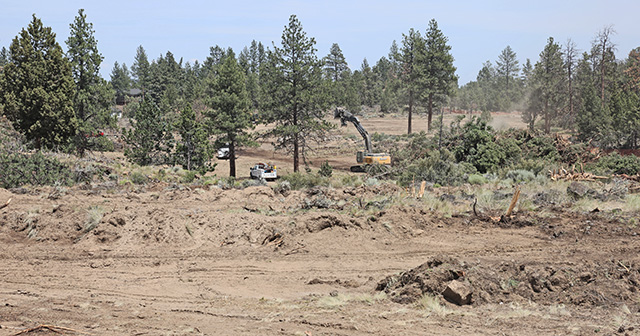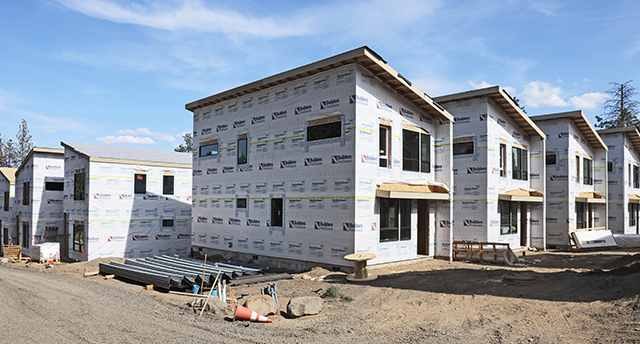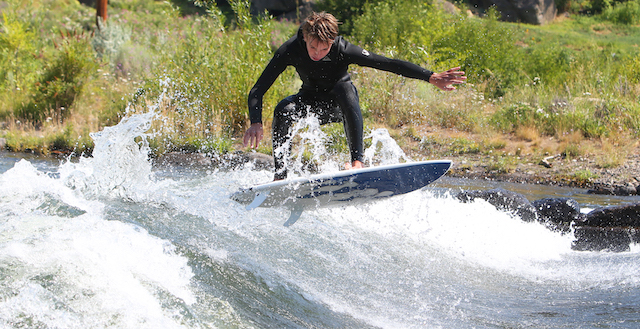Scientists step up research on volcano
Published 5:00 am Sunday, September 16, 2001
It’s not ”Dante’s Peak,” but it has scientists increasingly intrigued.
Compared to the fictitious Hollywood volcano, the Three Sisters are harmless.
Recent ground swelling, earthquake and volcanic gas emissions around South Sister, however, have prompted scientists to step up research on one of the most prominent volcanoes in Central Oregon.
A team of scientists from the U.S. Geological Survey (USGS) and Central Washington University on Monday morning will start five days of increased field work on South Sister.
The scientists are not worried about an imminent eruption, but are excited to learn more about one of the world’s more active volcanic chains.
Preliminary findings suggest a small amount of magma, or molten rock, may be creating pressure a few miles underground, causing the ground to swell, rumble and emit gases.
The Cascades routinely have tiny earthquakes, but only South Sister has active ground deformation. Scientists narrowed the time when the bulge occurred to 1998 to 2000.
But they lack enough historical data to know if the swelling, earthquake and gas emissions are increasing or are just normal behavior for the Three Sisters, which may routinely undergo tiny earthquakes that occur commonly in other volcanoes.
The additional seismic monitoring and satellite radar equipment they are installing could start providing answers as early as next month.
”It’s an interesting opportunity to better understand the process of how the Cascades stay alive,” said Willie Scott, the scientist in charge of the USGS Cascade Volcano Observatory in Vancouver, Wash.
Ferried around the rugged area by a helicopter, the six-member team will take ground and air readings from previously installed equipment and will set up more monitoring equipment in dozens of locations across 10 square miles from the volcano’s lip to more distant sites.
The crew will take readings from existing tilt stations and install more Global Positioning System receivers and compare them with benchmarks set up in 1985 to measure whether the ground has tilted. The leveling equipment is similar to that used by homebuilders to ensure straight lines.
In all, more than two dozen tilt stations, GPS stations and seismometers will cover the Three Sisters area if the mission goes as planned.
Carbon dioxide, sulfur dioxide and hydrogen sulfide emissions in the air will be compared to readings in May to see if they have increased. More water samples from creeks in the area will be taken later.
The seismic, gas and deformation readings could eventually help in the holy grail of volcanologists being able to make accurate long-term forecasts about eruptions.
The South Sister presents an unusual opportunity to gather data that could make such predictions a reality, Scott said.
”We’re excited because we’re in the business of studying volcanoes, and you always learn more from volcanoes that are active,” said USGS geologist Dan Dzurisin. ”We’re ramping up our efforts on the Three Sisters.”
The South Sister has exhibited the three traditional pre-eruption signals ground deformation, gas emissions and earthquakes but the signs have been weak, Dzurisin said.
Although the South Sister eventually will erupt like it and all volcanoes have done and will do again it will give strong warning signs long before erupting, he said.
From Mount Baker in northern Washington to Lassen Peak in northern California, the Cascade volcanoes have erupted periodically for thousands of years, Mount St. Helens most continuously and most recently.
Many Cascade peaks remain active to varying degrees, including Mount Hood, which routinely has swarms of minor earthquakes.
In May, scientists’ attention were drawn to the Three Sisters, which have not erupted in about 2000 years, after they detected a swelling of the earth’s crust near the South Sister.
The bulge 4 inches high and from nine to 12 miles in diameter is three miles west of the South Sister.
The bulge was detected with relatively new technology called satellite radar interferometry, which uses radar data taken from space to create images of the surface of the earth. The images are compared over time to show changes.
Tests of Separation Creek, which drains the area where the bulge was detected, show slightly higher than normal levels of chloride and sulfide, gases associated with volcanic activity.
Earlier this month, the USGS detected a minor earthquake, a 1.9 magnitude, around South Sister with a seismometer installed in May on a nearby peak, The Husband.
Scientists monitoring Central Oregon with older technology over the last 20 years could only detect quakes as small as 2.5 before the new seismic monitoring station was installed.
The scientists are working in cooperation with Deschutes and Willamette national forest officials to ensure they do not disturb sensitive vegetation and wildlife.
Landing sites relatively flat, treeless areas have been identified near all of the places where the scientists plan to work on the mountains.
The USGS’s Cascades Volcano Observatory, which has about 50 scientists, makes several field research trips a year, monitors seismic activity around the clock, advises local authorities on emergency evacuation plans, educates the public and publishes its research results in booklets designed for the general public.
The Three Sisters research trip has been in the works for several months. The scientists packed the tons of equipment last week for the trip to Central Oregon. They plan to establish a base camp at one of the Mount Bachelor Ski resort’s parking lots and hopscotch to the mountain sites all week.
”It’ll be a lot of concentrated work around South Sister,” Scott said.







